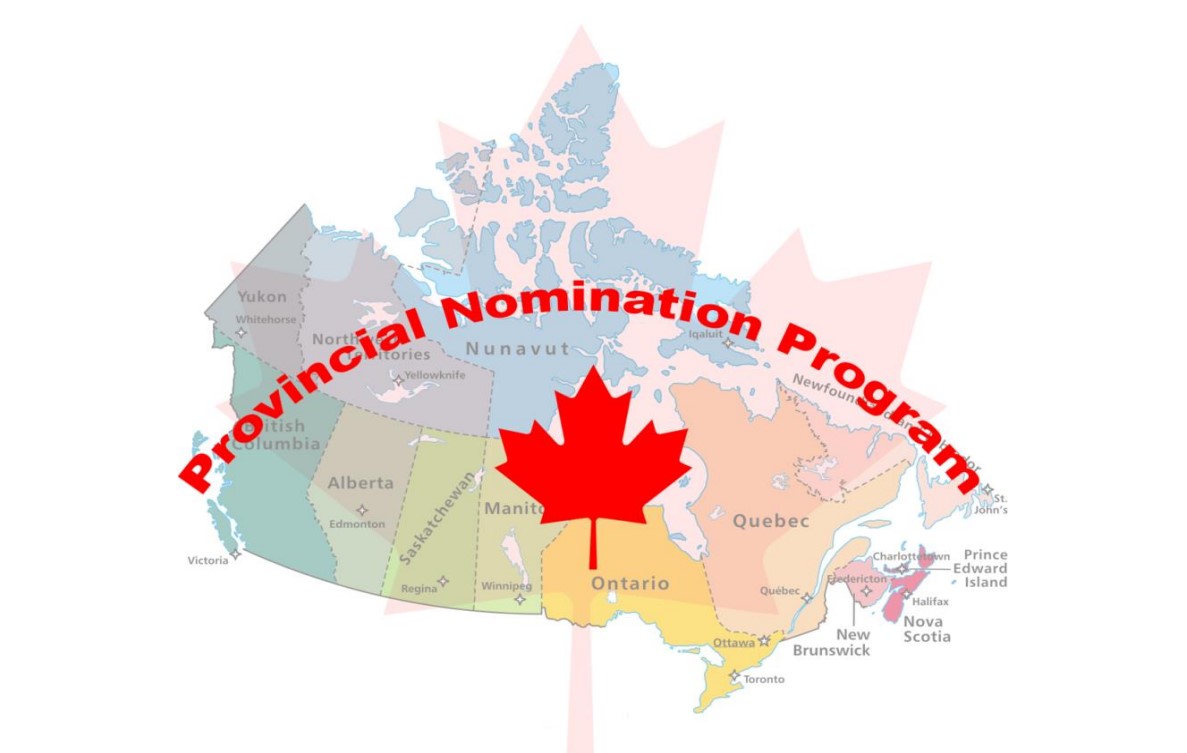Latest updates on Canadian immigration show the country’s steadfast dedication to welcome 1.14 million new permanent residents in the coming three years. My experience as an immigration lawyer confirms that Canada has set bold targets: 395,000 immigrants in 2025, 380,000 in 2026, and 365,000 in 2027. These numbers reflect the country’s plan to meet its growing workforce demands.
Canadian immigration policies have transformed to prioritize healthcare professionals, STEM experts, and skilled trades workers. The government turned down over 2.35 million temporary visa applications in recent months. The Express Entry system still offers the quickest route to permanent residency, and most applications take just six months to process. Our legal team is here to help you understand and work through the Canadian immigration process.
Canada Sets New Immigration Record in 2025
The Immigration, Refugees and Citizenship Canada (IRCC) has achieved a remarkable milestone in our nation’s immigration history. The federal government has officially adjusted its permanent residency admission goals after a period of ambitious growth targets. The new target stands at 395,000 new permanent residents for 2025. This strategic recalibration of Canada’s immigration approach sets additional targets of 380,000 for 2026 and 365,000 for 2027. These numbers maintain Canada’s position as a global leader in proportional immigration intake, despite the adjustment from earlier projections.
IRCC confirms 500,000 new permanent residents
The latest cic canada data needs careful interpretation. The government has revised its previous plans of welcoming 500,000 permanent residents in 2025 to line up with current economic and infrastructure capacities. The 395,000 target for 2025 remains a substantial commitment to immigration as the life-blood of Canada’s economic and demographic strategy. Temporary residents who already contribute to Canadian communities will make up more than 40% of these permanent resident admissions. This shows our nation’s focus on keeping talent that has already integrated into our society and economy.
Economic immigration remains the priority in Canada’s immigration strategy, making up nearly 62% of total admissions by 2027. The targets for 2025 include 232,150 economic immigrants, 94,500 family-class immigrants, and 68,350 refugees and humanitarian cases. This mix highlights Canada’s balanced approach that addresses economic needs and humanitarian commitments while supporting family reunification.
This year’s immigration plan specifically includes targets for French-speaking admissions – 8.5% of overall permanent resident admissions in 2025. These adjustments show a thought-out policy change to ensure sustainable population growth that supports long-term economic prosperity while tackling immediate infrastructure and housing challenges.
How this compares to previous years
Immigration news canada trends provide important context for these numbers. Canada welcomed approximately 483,390 new permanent residents in the 2024 fiscal year, almost reaching its ambitious target of 485,000. The country set a previous record in 2023 with 471,550 permanent residents, surpassing that year’s targets. Canada has steadily increased its immigration levels since 2017, starting from approximately 286,537 permanent residents.
The adjusted targets, though lower than recent projections, still exceed pre-pandemic figures substantially. The 2022 milestone of 437,591 permanent residents made history, showing how quickly Canada’s immigration targets have grown. Population changes will see a small decline of 0.2% in both 2025 and 2026 before growing again by 0.8% in 2027.
My experience as an immigration lawyer confirms that these targeted reductions across immigration streams create a balanced approach to managing Canada’s growth while strengthening program integrity. The cicnews coverage often misses the government’s nuanced approach to ensuring immigration benefits both newcomers and existing residents. These policy changes might affect your Canadian immigration experience differently. Our legal team can help you understand the impact and develop the most effective strategy for your situation.
Government Expands Immigration Targets Despite Global Uncertainty
Canada stands out with its strategic immigration approach that balances economic needs with growth. Recent immigration news shows adjusted immigration targets that support long-term prosperity. Immigration, Refugees and Citizenship Canada (IRCC) will keep permanent resident targets at 395,000 for 2025, 380,000 in 2026, and 365,000 in 2027. These numbers remain substantial even though they’ve been reduced from earlier projections.
Why Canada is increasing intake amid global migration restrictions
The country’s demographics make a strong case for this approach. Each year, more than 500,000 baby boomers reach retirement age. Natural population growth has dropped to almost zero. Immigration will power almost all population growth by 2030. The country needs workers in crucial sectors like healthcare, construction, transportation, and STEM (Science, Technology, Engineering, and Mathematics) fields.
Canadian immigration news sources highlight the government’s dedication to economic immigration. This category will make up 62% of total permanent resident admissions by 2027. Skilled newcomers play a key role in filling workforce gaps and helping transition to a green and digital economy.
The government has rolled out new initiatives targeting the construction industry during these uncertain economic times. A new advisory council brings together federal government representatives, unions, and industry leaders. This group will identify labor needs and create specialized immigration paths for construction workers. The government also plans to help undocumented construction workers who already build homes across the country.
CIC Canada puts special focus on Francophone immigration. The targets start at 8.5% of total immigration in 2025, grow to 9.5% in 2026, and reach 10% in 2027. These increased targets help Francophone communities outside Quebec thrive while strengthening the country’s bilingual identity.
Some critics say immigration might worsen housing shortages. Immigration Minister Marc Miller disagrees. He points out that Canada needs a robust construction and skilled trades workforce to build more homes. Statistics Canada data backs this up – immigrants make up 23% of all general contractors and residential builders.
The plan strikes a balance between humanitarian commitments and economic priorities. About 15% of permanent resident spots will go to resettled refugees and protected persons. This commitment keeps Canada’s position as a world leader in refugee resettlement.
As your immigration lawyer, these policy shifts show Canada’s practical approach to managing migration in today’s world. Let’s talk about how these targeted pathways might open doors for your skills and background. Reach out to our firm today.
 IRCC Implements Category-Based Express Entry Reforms
IRCC Implements Category-Based Express Entry Reforms
Canada announced major reforms to its skilled immigration system through Immigration, Refugees and Citizenship Canada (IRCC) on February 27, 2025. The Express Entry selection process will see its biggest changes since category-based draws started in 2023. Immigration lawyers who track Canada’s immigration updates have noticed a clear change in selection priorities that targets economic sectors with worker shortages.
STEM, healthcare, and trades prioritized
Canada’s immigration priorities have changed with the 2025 Express Entry reforms. Minister Marc Miller selected four categories to receive priority invitations to apply (ITA) this year. These include French-language proficiency, Healthcare and Social Services, Trades occupations, and a new Education category. This marks a change from previous years. STEM occupations and Agriculture/Agri-food sectors no longer appear on the priority list.
The STEM category has seen dramatic changes. Officials removed 19 occupations and added only 6. Engineering, infrastructure, and industrial fields now take priority over IT and data-related roles. Most tech positions don’t qualify anymore, including software developers, web designers, computer engineers, and data scientists. The category now includes civil engineering technologists, electrical engineering technicians, geological engineers, and mechanical engineering professionals.
Healthcare now covers social services occupations. Eight new roles joined the list—pharmacists, dental hygienists, social workers, and animal health technologists. Six other positions were removed. The Trades category expanded with 19 new occupations. Construction, energy, and infrastructure development roles lead these additions. Roofers, concrete finishers, bricklayers, and construction managers can now apply. These changes aim to help solve Canada’s housing shortage.
A new Education category targets teachers, child care educators, and instructors of persons with disabilities. This addition shows Canada’s growing need for education professionals.
Legal implications for applicants
These changes bring important legal considerations for immigrants. The 2025 draws will focus on Canadian Experience Class candidates who already work in Canada. This shows Canada’s commitment to keep temporary workers who contribute to its economy.
Tech professionals affected by STEM removals have other options. The Global Talent Stream offers fast work permits. Tech-focused Provincial Nominee Programs in Ontario and British Columbia remain available. Employer-sponsored LMIA-based work permits provide another path. Healthcare professionals can look into provincial nominee programs or specialized healthcare immigration streams.
Candidates need to meet Express Entry’s basic requirements for category-based selections. They must show at least six months of full-time, continuous work experience in the last three years. Part-time equivalent experience also counts. Category-based draws add to general and program-specific rounds rather than replacing them.
These reforms show Canada’s focus on filling critical workforce gaps while building housing, healthcare, and education infrastructure. Our immigration law office has seen more clients asking about these changes. Contact us now to find your best path to Canadian permanent residence if these reforms affect your occupation.
Provincial Nominee Programs Scale Up to Meet Quotas

Federal officials have cut PNP allocations by 50% for 2025. The total nominations dropped from 120,000 to 55,000. This unprecedented reduction forces provinces to rethink their immigration strategies and set strict priorities to handle their smaller quotas. My experience as a top immigration lawyer shows this change will alter regional immigration pathways like never before.
How provinces are adjusting to higher allocations
Provinces aren’t getting higher allocations – they’re rushing to deal with much smaller quotas. BC, which usually benefits greatly from the PNP system, has raised serious concerns. The province started 2025 with about 5,200 pending applications but received only 4,000 nomination spots from the federal government. BC now uses 2,900 spaces for existing applications and saves roughly 1,100 spots for new applicants – mostly healthcare workers and immigrants who can boost the economy.
Manitoba’s case shows how federal allocations fall short of what provinces need. Labor and Immigration Minister Malaya Marcelino says the province needs at least 12,000 allocations to meet its 2025 labor demands. Ontario officials worry these cuts will hurt economic growth and workforce development.
Alberta questions why PNP slots dropped by 50% when overall immigration targets fell by just 21%. This suggests the federal government wants less provincial control over economic immigration. Saskatchewan also struggles with its lowest allocation since 2009.
Every province now makes big program changes. BC stopped general and priority occupation invitations for 2025. They now focus on about 100 high-impact candidates from more than 10,000 registrants. The province also limits its Health Authority stream to front-line healthcare workers who directly provide care.
These PNP cuts line up with the federal government’s bigger immigration plan that focuses on “Federal Economic Priorities” in key sectors. The plan aims to fill more than 40% of permanent resident spots in 2025 with students or workers already in Canada. This shows a move toward keeping temporary residents rather than bringing new immigrants through provincial programs.
Anyone looking at Canadian immigration in 2025 must understand these provincial changes. Each province sets unique limits and priorities based on their smaller allocations. As your immigration counsel, you should talk to our team right away if you want to try for provincial nomination this year. When BC has 10,000 candidates competing for about 100 spots in some streams, you need expert guidance to create a winning immigration strategy that fits these new provincial rules.
Family Sponsorship and Super Visa Programs See Uptick
The life-blood of Canada’s immigration policy remains family reunification. Recent changes to the Super Visa program have created new ways for parents and grandparents to join their Canadian relatives. The Super Visa now offers a flexible alternative to permanent residency pathways. Parents and grandparents of Canadian citizens and permanent residents can stay in Canada for extended periods. This multiple-entry visa lets them visit for up to five years at a time during a ten-year period. Many families seeking reunification now prefer this option.
The Super Visa program has become more popular after changes to the Parents and Grandparents Program (PGP). Families who can’t get one of the limited PGP spots can turn to the Super Visa. It works faster and has fewer restrictions, which lets families plan longer stays without frequent renewals. Visa holders can also apply for two-year extensions while in Canada. This means they could stay continuously in the country for up to seven years.
Changes in health insurance rules and processing
Immigration, Refugees and Citizenship Canada (IRCC) made the most important change to Super Visa regulations on January 28, 2025. They introduced a significant modification to health insurance requirements. Applicants can now get coverage from international insurers instead of just Canadian providers. These companies must meet specific criteria. Foreign insurance providers must:
- Be authorized by the Office of the Superintendent of Financial Institutions (OSFI) under the Insurance Companies Act
- Appear on OSFI’s list of federally regulated financial institutions
- Issue policies during the course of their insurance business in Canada
Health insurance policies must still meet strict standards among other requirements. These include minimum coverage of CAD 139,336.02, validity for at least one year from entry date, and detailed protection for healthcare, hospitalization, and repatriation. Each time they enter Canada, applicants must show proof of valid insurance. This ensures they have continuous coverage during their stay.
This move shows Canada’s steadfast dedication to family reunification while managing practical needs. The sort of thing I love about this change is how it helps clients from countries where international insurance options are cheaper or more available than Canadian alternatives. More families can now get the Super Visa because the broader eligibility criteria reduce financial barriers while keeping necessary health protections.
Immigration policy changes faster in today’s ever-changing world. Call our office today to get customized advice on the best pathway for your family’s needs and to ensure your Super Visa application meets all current requirements.
Legal Experts Weigh In on Systemic Strain
Our immigration law practice sees extraordinary pressure on Canada’s immigration system right now. Immigration, Refugees and Citizenship Canada (IRCC) faces a massive backlog that remains worrying despite recent progress. The total backlog dropped to 821,200 applications by February 28, 2025—a 7.95% decrease from 892,100 last month. The numbers stayed below 1 million for three straight months, but the system strain raises serious legal questions about due process and fair procedures.
Concerns about backlog, appeals, and due process
IRCC wants to process 80% of applications within their service standards. The reality looks quite different. Express Entry applications show a 25% backlog rate, which is a big deal as it means that IRCC missed its 20% target. The Provincial Nominee Program through Express Entry paints an even grimmer picture. Its backlog rates jumped to 36% by February 2025, up from 30% in just one month. These numbers represent thousands of skilled immigrants stuck in legal uncertainty.
These delays create a ripple effect on applicants’ legal rights. The Immigration Appeal Division (IAD) handles appeals for sponsorship applications and removal orders. The system faces mounting pressure as more people ask for legal help with delayed decisions. This strain on the appeal system could compromise the principles of natural justice that are the foundations of Canada’s immigration legal framework.
These backlogs leave many immigrants vulnerable. A newer study, published by the Justice Department points out that immigrants who don’t know Canadian law or their rights become “more vulnerable to manipulation and mistreatment”. This vulnerability grows when their legal status remains uncertain due to delays. Temporary foreign workers often stay quiet about their rights because they worry about their immigration status. One worker explained: “When tied to a certain business, they’re scared to talk and share their experience for fear of getting sent back home”.
The federal government recognizes these challenges. They hired over 1,200 officers in 2022-2023 and upgraded their technology. These efforts haven’t closed the gap between service standards and actual processing times—a serious legal issue. The cic canada news shows visitor visas have the highest backlog at 65%, while study permits follow at 45%.
Our legal team suggests thinking over legal options like mandamus applications if you face long delays. Call our office today to learn how we can protect your rights during your immigration process.
Immigration Lawyers Report Surge in Consultations
Our immigration law firm has seen a remarkable 65% rise in consultation requests in early 2025, thanks to record numbers of newcomers entering Canada. These numbers link directly to the sweeping policy changes in Canada’s immigration world. We noticed this increase stems from applicants who feel confused about their best options due to changing rules and tough competition for limited spots in programs like the Provincial Nominee Programs.
Skilled workers currently in Canada as temporary residents make up the biggest share of increased consultations. They want clarity about their permanent residency options. The numbers tell the story – 35% of Canada’s permanent residents in 2022 were already living and working in the country as temporary residents. This shows how moving from temporary to permanent status has become a key immigration strategy.
What newcomers are asking about most
Certain questions come up repeatedly in our daily consultations. Many clients ask about other pathways after the dramatic cuts in Provincial Nominee Program allocations and removed occupations from category-based Express Entry draws. Temporary workers worry about keeping their legal status while they pursue permanent residency, especially with current processing delays.
Clients often need help telling the difference between authorized and unauthorized immigration representatives. The College of Immigration and Citizenship Consultants states that “while the vast majority of immigration consultants operate within the high standards of the profession, the industry can be exploited by dishonest individuals.” Many newcomers don’t know that only specific professionals can legally charge fees for immigration services. These include lawyers and paralegals who belong to Canadian provincial or territorial law societies, notaries who are members of the Chambre des notaires du Québec, and citizenship or immigration consultants registered with the College of Immigration and Citizenship Consultants.
Questions about Legal Aid eligibility have grown among clients with limited funds. Legal Aid Ontario might help eligible refugee claimants or immigrants, though they should know that “even if you have a legal aid certificate, you still have to pay Immigration, Refugees and Citizenship Canada’s application and filing fees for your immigration matters.”
You should book a complete consultation to review your specific situation under these changing policies. Our office stands ready to provide expert legal guidance during these unprecedented changes. Contact us today.
Processing Times Improve with Automation and Analytics
Immigration, Refugees and Citizenship Canada (IRCC) has poured over $1.2 billion into modernizing its operations since 2020. Their technological advancements have made application processing much faster. The department spread its investment across several years: $86.39 million from 2020-21, $254.98 million from 2021-22, and $599.14 million from 2022-23. The government added another $39.01 million to cut down application backlogs and processing times. As your immigration lawyer who keeps track of Canadian immigration news, I’ve seen these investments bring real benefits to certain applicant groups.
New tools IRCC is using to manage volume
The life-blood of IRCC’s technological transformation lies in its advanced data analytics system. This system processes visitor visa applications 87% faster than old methods. The system started with visitor visas from high-volume countries and now handles all temporary resident visa applications from outside Canada. The department now uses several sophisticated tools with specific functions:
Advanced analytics and automation tools make the process smoother. These tools make positive decisions on routine cases, sort applications by required expertise, flag applications needing extra checks, and create summary notes for officers. The eligibility function spots straightforward applications to accelerate processing, which lets officers handle more complex cases. IRCC has also created a portal that lets permanent residence applicants in Canada complete their process online. Between June and December 2021, 225,000 permanent residents used this portal.
These tools do more than just optimize processing – they cut down waiting times substantially. The system processed eligible applications about two months faster than manual assessment (7.7 months versus 9.5 months). Results vary by program – automation helped finalize 67% of applications, while manual assessment completed only 51%.
IRCC plans to roll out its Digital Platform Modernization program through 2027. This includes a new Case Management Platform to replace the current Global Case Management System. Call our office today to learn how these technological advances could accelerate your immigration application and help you succeed in this evolving system.
Policy Shifts Reflect Canada’s Long-Term Demographic Strategy
Canada’s immigration policy stems from demographic realities that shape our economic future. Statistics Canada’s latest numbers show our country’s demographic dependency ratio—the number of children and seniors per 100 working-age people—has hit 52. This marks the highest level since 1966. Our working population would face massive economic pressure if this ratio climbs to 64 by 2030 without mutually beneficial alliances in immigration.
Aging population and labor shortages drive decisions
Our country faces clear demographic challenges that need a well-planned immigration approach. More than 20% of working Canadians are between 55 and 64 years old. About 4 million workers will retire this decade—that’s roughly 20% of our labor force. Our fertility rate has dropped to 1.4 children per woman, which sits substantially below the 2.1 replacement level needed for population stability. These factors create a demographic challenge that puts our economic sustainability at risk.
Numbers tell only part of the story. The federal government has streamlined processes to fill specific labor gaps. Recent Express Entry reforms focus on bringing healthcare professionals, STEM experts, and skilled trades workers to Canada. These changes are not just quick fixes—they are the foundations of a detailed strategy to keep Canada economically strong in the global race for talent.
The government knows that keeping temporary residents already in Canada makes sense. These immigrants have built lives in our communities and workplaces, which leads to better economic results and stronger social bonds. French-speaking immigrants will make up 10% of newcomers by 2027, showing how immigration policy serves both workforce needs and language diversity goals.
My experience as an immigration lawyer suggests arranging your application to match Canada’s demographic needs. Reach out to our office to create a strategy that showcases your skills for Canada’s future workforce requirements.
Immigration Levels Plan 2025–2027 Signals Continued Growth
Canada’s federal government released a groundbreaking Immigration Levels Plan that targets both permanent and temporary residents. The government revealed its complete 2025-2027 Immigration Levels Plan on October 24, 2024. This plan shows a new direction in Canada’s immigration approach. The government will reduce permanent resident admissions from 464,265 in 2024 to 395,000 in 2025. Further cuts will bring the numbers down to 380,000 in 2026 and 365,000 in 2027. These numbers mark a radical alteration from earlier plans that targeted 500,000 admissions in 2025 and 2026.
Breakdown of targets and categories
The 2025-2027 plan balances various immigration streams with specific targets. The economic class remains the largest component. Canada wants to welcome 232,150 immigrants in 2025, 229,750 in 2026, and 225,350 in 2027. Economic immigrants will make up nearly 62% of total admissions by 2027. This shows Canada’s dedication to meeting labor market needs. Family reunification programs will represent about 22% of permanent resident admissions. The targets start at 94,500 in 2025 and decrease to 88,000 in 2026 and 81,000 in 2027.
The humanitarian commitments section allocates 68,350 spots for refugees, protected persons, and humanitarian cases in 2025. These numbers will decrease to 62,250 in 2026 and 58,650 in 2027. The government set specific targets for French-speaking immigrants outside Quebec. The proportions start at 8.5% in 2025, rise to 9.5% in 2026, and reach 10% by 2027.
The plan brings a new feature by introducing temporary resident targets. Canada will welcome 673,650 temporary residents in 2025. This number will decrease to 516,600 in 2026 and slightly increase to 543,600 in 2027. These include:
- International Mobility Program workers: 285,750 in 2025, 128,700 in 2026, 155,700 in 2027
- Temporary Foreign Worker Program participants: 82,000 annually
- International students: 305,900 annually
The population will decline marginally by 0.2% in both 2025 and 2026. Growth will return at 0.8% in 2027. Let’s schedule a consultation soon to discuss how these adjusted targets affect your immigration plans. We can identify the best pathway based on your specific situation.
Conclusion
The Canadian immigration system has changed dramatically in 2025. The most important change reduced permanent resident targets from 500,000 to 395,000, which shows a balanced approach to growth. Canada still leads global immigration efforts. The government has completely changed Express Entry categories and cut Provincial Nominee Program allocations by 50%. These changes show how the government wants to match immigration with Canada’s economic and demographic requirements.
IRCC’s $1.2 billion modernization project has improved processing times. The new technology has helped reduce application backlogs. Yet, some big problems persist. The immigration programs face system-wide pressure, and processing times aren’t consistent across categories. These changes come when Canada needs immigrants more than ever. More than 4 million workers will reach retirement age this decade. Immigration helps fill labor gaps and keeps the economy stable.
My years as an immigration lawyer have shown me how these policy changes affect future immigrants. My legal team stays committed to guiding clients through Canada’s new immigration system. We can help you create a personalized strategy to reach your immigration goals. Call our office at [contact information] to schedule a complete consultation. We’ll work together to help you succeed in this ever-changing immigration world.
FAQs
Q1. What are Canada’s new immigration targets for 2025-2027? Canada aims to welcome 395,000 new permanent residents in 2025, 380,000 in 2026, and 365,000 in 2027. These targets represent a strategic recalibration from earlier projections, balancing economic needs with sustainable growth.
Q2. How has the Express Entry system changed recently? The Express Entry system has undergone significant reforms, with new category-based selections prioritizing healthcare, trades, and education occupations. Many STEM occupations have been removed, signaling a shift in focus towards specific economic sectors experiencing labor shortages.
Q3. What changes have been made to the Super Visa program? Recent changes to the Super Visa program allow applicants to purchase health insurance from international providers, provided they meet specific criteria. This offers more flexibility for families seeking reunification, potentially reducing financial barriers while maintaining necessary health protections.
Q4. How is Canada addressing immigration processing backlogs? Canada has invested over $1.2 billion since 2020 to modernize its immigration operations. New tools using advanced analytics and automation are being implemented to streamline processing, with some applications being processed up to 87% faster than traditional methods.
Q5. Why does Canada continue to prioritize immigration despite global uncertainties? Canada’s aging population and declining birth rate create workforce challenges that immigration helps address. With over 20% of the current workforce expected to retire this decade, strategic immigration is crucial for maintaining economic stability and growth in the face of demographic pressures.








